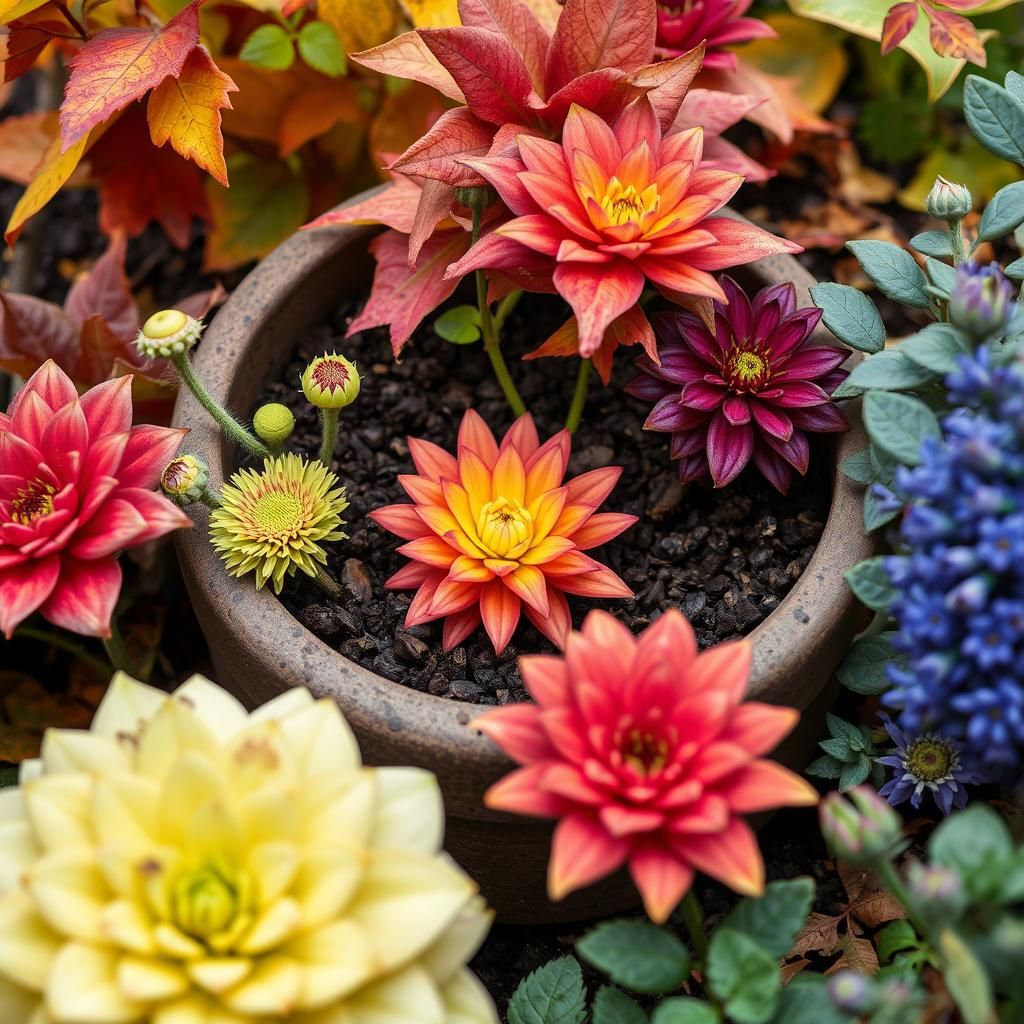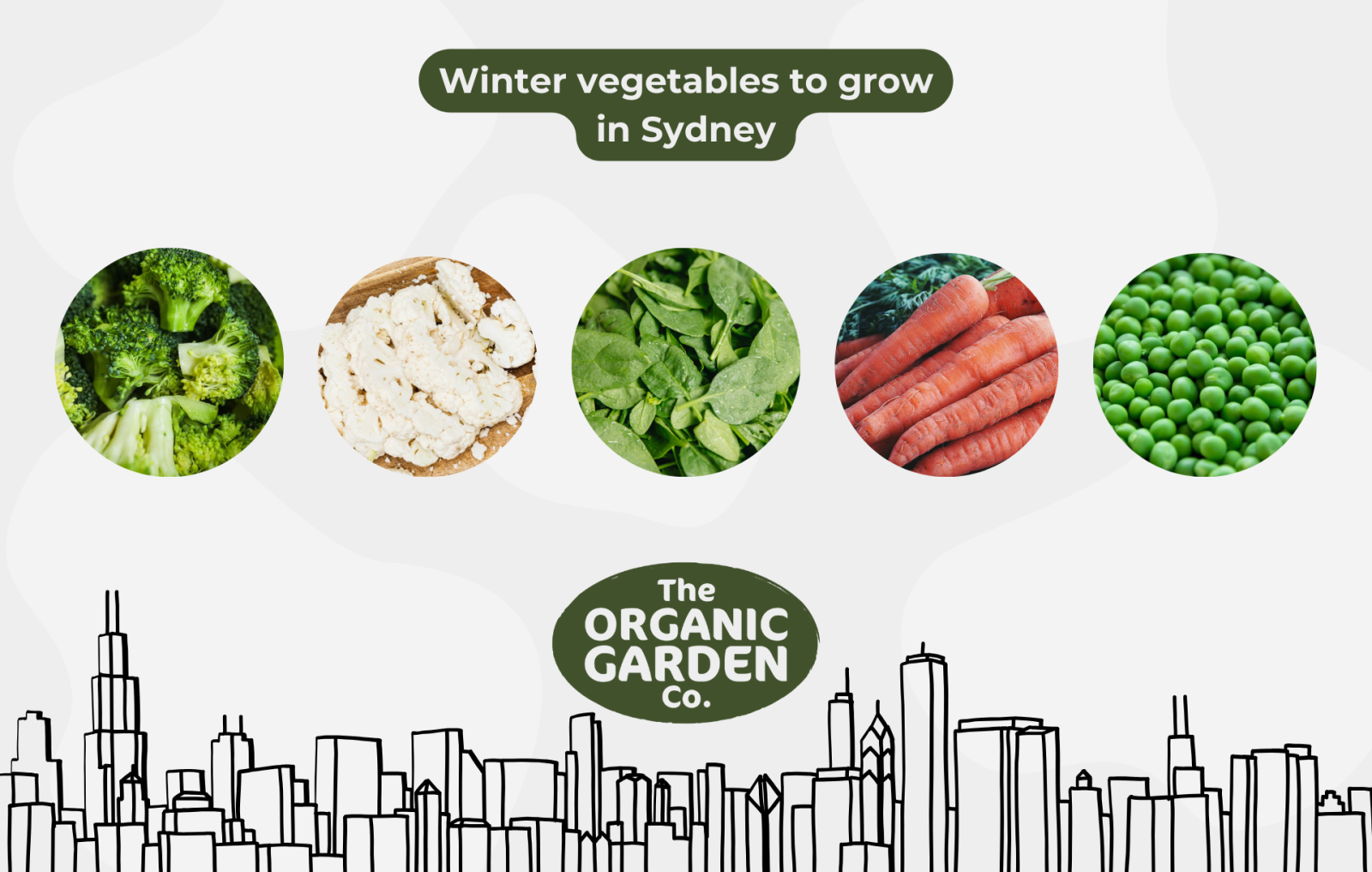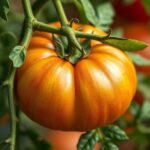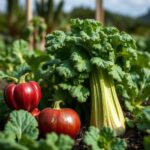What to Plant in Autumn Sydney: A Guide for Seasonal Gardeners

Autumn in Sydney brings a unique opportunity for gardeners to prepare their plots for the changing seasons. With the climate shifting, this period opens doors to a variety of plants that thrive in the cooler temperatures. Understanding what to plant during these months not only enhances your garden's aesthetic but also ensures a bountiful harvest come spring. This guide will explore the best vegetables, herbs, and flowers to cultivate in Sydney's autumn, providing essential tips for seasonal gardeners looking to maximize their gardening potential and create a vibrant outdoor space during this transitional time.
Best Vegetables to Plant in Autumn in Sydney
In Sydney, the autumn season is an ideal time to start planting a variety of seasonal vegetables that thrive in the cooler temperatures. With temperatures gradually dropping, gardeners can take advantage of this time to sow seeds for leafy greens, such as spinach and kale, which flourish in autumn's mild climate. Additionally, it’s a great time to plant root vegetables like carrots, beetroots, and turnips, as they can develop their flavor with the cooler soil temperatures. Autumn planting can lead to a plentiful harvest in early winter, making the most of the garden space before the frost sets in.
Top Leafy Greens for Autumn Planting
When considering leafy greens for your autumn garden in Sydney, options like spinach, lettuce, and kale are excellent choices. These greens not only grow well in cooler temperatures but are also packed with nutrients. Spinach is particularly favored for its quick germination, while kale is a robust plant that can withstand frosty evenings, providing tasty leaves throughout winter.
Root Vegetables That Thrive in Cooler Weather
Autumn is specifically suited for planting root vegetables such as carrots, beets, and radishes. These vegetables require a longer growing season, and planting them in autumn allows for a gradual growth period. As temperatures decline, the sugar content in vegetables like carrots increases, resulting in a sweeter taste. Beets can be harvested throughout the season, offering versatility in the kitchen.
Herbs to Start in Autumn
Autumn is also a favorable time to plant certain herbs that can overwinter and provide fresh flavors for your dishes. Consider planting parsley, coriander, and thyme. These herbs can establish strong root systems in the cooler months, and you can enjoy fresh herbs during the colder seasons. They are relatively low maintenance and can be harvested as needed.
Benefits of Autumn Gardening in Sydney
Gardening in autumn provides numerous benefits, including the ability to avoid the intense heat of summer. Cooler temperatures encourage stronger plant growth and can lead to a more sustainable garden. Additionally, planting in autumn can help keep weeds at bay, since many gardeners have less competition with their newly sown seeds, giving the new plants a head start.
Tips for Successful Autumn Planting
To ensure your autumn planting is successful, it is essential to prepare the soil properly. This involves enriching the soil with compost and ensuring good drainage to prevent waterlogging as the temperatures drop. Regular watering is crucial, but be mindful not to overwater, as this can lead to root rot in cooler months. Utilizing mulch can help maintain moisture levels while regulating soil temperature.
| Vegetable | Ideal Planting Time | Harvest Time |
|---|---|---|
| Spinach | March - April | June - July |
| Kale | March - April | June - July |
| Carrots | March - April | June - September |
| Beets | March - April | June - July |
| Parsley | March - April | Throughout winter |
What crops to plant in autumn in Sydney?
![]()
In Sydney, autumn provides a favorable climate for growing a variety of crops. The temperatures begin to cool down, and with adequate rainfall, this season offers ideal conditions for planting certain vegetables and herbs. Here are some of the best crops to consider planting in autumn.
1. Leafy Greens
Leafy greens thrive in the cooler temperatures of autumn. They can be planted in early autumn and harvested throughout the season.
- Spinach: A fast-growing vegetable that can be harvested in just a few weeks.
- Kale: A resilient green that flourishes even in cold weather, providing a nutritious harvest.
- Swiss Chard: Adds vibrant color to your garden and grows well in various soil types.
2. Root Vegetables
Root vegetables are perfect for autumn planting as they develop well in cooler soil.
- Carrots: They can be sown directly into the garden and are sweetened by frost.
- Beets: These colorful roots are easy to grow and can be harvested throughout winter.
- Radishes: Fast-paced growers that can be planted in succession for continuous harvest.
3. Brassicas
Brassicas or cruciferous vegetables benefit from the cooler weather and include a variety of well-known crops.
- Broccoli: Requires a bit more care but yields delicious heads rich in nutrients.
- Cauliflower: A versatile vegetable that can be used in various dishes and has a long growing season.
- Cabbage: A hardy crop that stores well, making it a staple for autumn planting.
4. Herbs
Herbs can also thrive in autumn, providing flavor and fragrance to your garden.
See also:
- Cilantro: Best planted in cooler weather, it adds a fresh taste to dishes.
- Parsley: A biennial herb that can be sown in autumn for a spring harvest.
- Thyme: A hardy perennial that can survive winter and continue to grow into spring.
5. Legumes
Legumes are excellent for soil health and are suitable for an autumn garden.
- Peas: Ideal for planting in early autumn, they can tolerate the cooler temperatures.
- Broad Beans: These can be sown in autumn to produce a harvest in late winter or early spring.
- Fava Beans: Another resilient option, they improve soil nitrogen levels as they grow.
What vegetables grow in winter in Sydney?

In Sydney, the winter months are typically from June to August, providing a unique climate for growing a variety of vegetables. The mild winters in this region allow for the cultivation of several hardy crops that thrive in cooler temperatures. Here are some vegetables that grow well during winter in Sydney:
Popular Winter Vegetables
Many vegetables can flourish during the winter months in Sydney due to its moderate climate. The following list includes some of the most common options:
- Broccoli – A nutritious leafy green that thrives in cooler temperatures.
- Cauliflower – Similar to broccoli, it grows well and is rich in vitamins.
- Snow Peas – These sweet, crisp peas can be planted from late winter to early spring.
- Kale – A hardy leafy green that can withstand frost, making it perfect for winter cultivation.
- Carrots – These root vegetables grow well in the cool soil of winter.
Leafy Greens for Winter Planting
Leafy greens are particularly popular during the winter months in Sydney, as they offer essential nutrients and can tolerate colder conditions. The best choices include:
- Spinach – Fast-growing and nutrient-dense, it grows well even when temperatures dip.
- Swiss Chard – An adaptable green that can flourish in lower light conditions.
- Romaine Lettuce – Known for its crisp texture, it can be harvested in winter.
Root Vegetables and Their Benefits
Root vegetables are another excellent option for winter gardening in Sydney. They are generally resistant to cold and can be stored for long periods. Key root vegetables include:
- Beetroot – A versatile root that can be harvested at various stages.
- Turnips – A hardy vegetable that is easy to grow and harvest in winter.
- Radishes – Fast-growing and perfect for adding crunch to winter salads.
Preparing the Soil for Winter Crops
Proper soil preparation is crucial for successful winter vegetable gardening. Here are some steps to ensure a healthy growing environment:
- Amend the Soil – Adding compost or well-rotted manure increases nutrient availability.
- Pest Control – Keeping the soil free of pests is essential, especially in cooler months.
- Mulching – Applying mulch helps retain warmth and moisture in the soil.
Winter Gardening Tips
Gardening in winter requires specific strategies to ensure crops thrive. Consider the following tips to improve your winter garden:
- Choose the Right Varieties – Select varieties known for winter resilience.
- Use a Greenhouse – If possible, growing vegetables in a greenhouse can extend the growing season.
- Regular Watering – Keep the soil moist but avoid overwatering to prevent root rot.
Can you plant in autumn in Australia?
![]()
Yes, you can plant in autumn in Australia. The autumn season in Australia, which spans from March to May, provides an excellent opportunity for planting because of the moderate temperatures and increased rainfall in many regions. This period is ideal for establishing new plants that will thrive in the cooler months ahead and even prepare for the growing season in spring.
Benefits of Autumn Planting
Planting in autumn offers several advantages, especially in the diverse climate of Australia.
- Moisture Retention: Autumn typically brings increased precipitation, which helps maintain soil moisture, essential for young plants.
- Lower Temperatures: The cooler weather reduces stress on plants compared to the heat of summer, helping them establish roots effectively.
- Extended Growing Period: Planting in autumn allows plants to develop roots before the winter sets in, giving them a head start when spring arrives.
Best Plants to Grow in Autumn
When considering what to plant during this season, some species work exceptionally well in the autumn climate of Australia.
- Annuals: Many annual flowers such as pansies and violas flourish when planted in autumn.
- Vegetables: Crops like broccoli, cauliflower, and spinach thrive in cooler temperatures and can be sown now.
- Perennials: Planting perennials in autumn helps them establish strong root systems, ready to bloom in spring.
Preparing Your Soil
Proper soil preparation is crucial for successful planting in autumn.
See also:
- Testing Soil pH: Before planting, it's important to test the soil pH to ensure it meets the needs of your chosen plants.
- Amending Soil: Enhance soil fertility by adding organic matter such as compost or well-rotted manure.
- Tilling the Soil: Loosen the soil to improve drainage and make it easier for new roots to penetrate.
Winterizing Your Garden
After planting in autumn, it’s essential to prepare your garden for the upcoming winter months.
- Mulching: Adding a layer of mulch helps retain moisture and protect young plants from sudden temperature changes.
- Watering: Keep the plants well-watered, particularly in the early stages of establishment.
- Covering Sensitive Plants: Consider covering any tender plants with frost cloth or similar materials to protect them from cold snaps.
Seasonal Considerations
Autumn weather can vary significantly across different regions of Australia, impacting planting decisions.
- Climate Zones: Understand your specific climate zone as some areas experience early frosts, while others remain mild.
- Local Conditions: Stay updated with local weather forecasts to decide the best time for planting within the autumn months.
- Late Planting: Be cautious with late autumn planting to ensure plants have enough time to establish before winter.
What to do in the garden in autumn in Australia?

Autumn in Australia is a crucial time for gardeners, as it marks the transition into cooler months and indicates changes in gardening habits. Here are some essential tasks and activities to consider for maintaining a healthy and beautiful garden during this season.
Prepare the Soil for Winter
Preparing the soil is a fundamental aspect of autumn gardening. This process ensures that the garden is ready for the planting of winter crops and helps improve soil health.
- Test your soil: Check the pH and nutrient levels to understand what amendments are needed.
- Add organic matter: Incorporate well-rotted compost or manure to boost soil fertility.
- Mulch the garden beds: Adding a layer of mulch helps retain moisture and suppress weeds during the cooler months.
Plant Winter Vegetables
Autumn is an excellent time to sow seeds for winter vegetables that thrive in cooler weather. These can provide a harvest even in the winter months.
- Select suitable crops: Choose vegetables like kale, broccoli, and peas that can withstand lower temperatures.
- Plant seeds directly: Sow seeds directly into the prepared soil, following package guidelines for spacing.
- Maintain moisture: Ensure that newly sown seeds are watered regularly to support germination.
Prune Trees and Shrubs
Pruning is vital during autumn as it promotes healthy growth and prepares plants for the winter season. Properly pruning trees and shrubs helps to remove dead or diseased branches.
- Identify branches to prune: Look for any dead, damaged, or crossing branches that could hinder growth.
- Use proper tools: Ensure you have sharp, clean tools to prevent plant damage and potential infections.
- Clean up debris: Collect and dispose of pruned material to reduce the risk of pests and diseases.
Control Pests and Diseases
Pest and disease control should be a routine task in your autumn garden. As plants prepare for dormancy, it's vital to address any existing issues.
- Inspect plants regularly: Look for signs of pests such as aphids or spider mites and take action promptly.
- Use organic pesticides: Apply organic solutions when necessary to reduce harmful effects on the ecosystem.
- Clean garden tools: Regularly clean tools to minimize the risk of transferring diseases between plants.
Plan for the Next Season
Autumn is also a good time to start planning for the upcoming gardening season. This proactive approach will help you maximize your garden’s potential.
- Create a garden layout: Consider what crops to plant next spring and how best to arrange them.
- Order seeds and supplies: Take the opportunity to order any needed seeds and gardening supplies while they are available.
- Research new techniques: Explore gardening methods such as crop rotation or companion planting for a richer garden experience.
Questions from Our Readers
What vegetables can I plant in autumn in Sydney?
In autumn, you can plant a variety of vegetables in Sydney, including broccoli, cabbage, carrots, and spinach. These crops thrive in the cooler temperatures of autumn and can provide a bountiful harvest throughout the season.
Is it too late to plant seeds in autumn in Sydney?
No, it is not too late to plant seeds in autumn in Sydney. Many leafy greens and root vegetables can still be successfully sown in autumn, ensuring that you have fresh produce to enjoy during the cooler months.
Can I grow herbs in autumn in Sydney?
Absolutely! Autumn is a great time to grow a variety of herbs in Sydney, such as parsley, cilantro, and thyme. These herbs can thrive in the milder temperatures and can be harvested throughout the season for use in cooking.
What flowers can be planted in Sydney during autumn?
In autumn, you can plant various flowers that will bloom in the spring, including pansies, snapdragons, and bulbs like daffodils. Planting these flowers in autumn gives them a head start and helps create a beautiful garden when spring arrives.
See also:

If you want to read more articles like What to Plant in Autumn Sydney: A Guide for Seasonal Gardeners, we recommend you check out our Gardeners category.
Leave a Reply
Related Articles